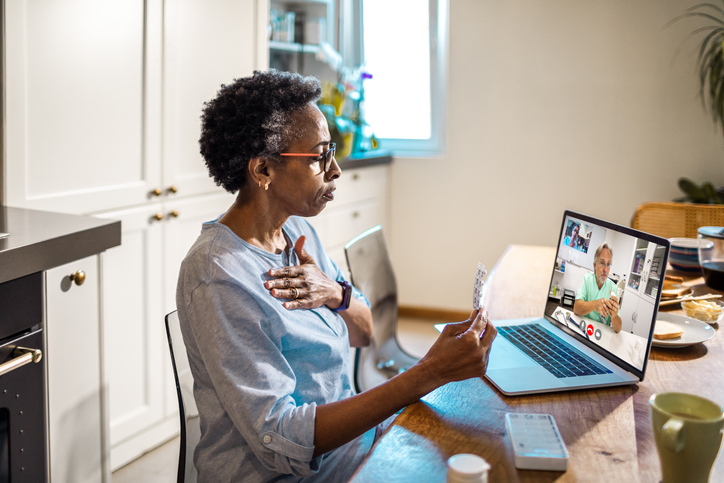 |
| This study shows a consistent relationship between a reduced uptake of telemedicine appointments and greater levels of socioeconomic deprivation among low-income and ethnic minority groups. Photo: Getty Images. |
While telemedicine has been proven to be convenient and crucial in many aspects, especially during the COVID-19 pandemic, this model of care has also shown potential for exacerbating healthcare inequalities. A recent retrospective cohort study aimed to identify and characterize factors associated with non-attendance across face-to-face and telemedicine outpatient appointments. The researchers found that male sex, greater levels of deprivation, a previously canceled appointment and not self-reporting ethnicity were risk factors for missed appointments.
A total of 85,924 patients (median age 55, 54.4% female) who were newly registered at a UK institution were evaluated. Non-attendance differed significantly: 9% face-to-face pre-pandemic and 10.5% face-to-face, 11.7% asynchronous and 7.8% synchronous during the pandemic.
Black patients had worse attendance in synchronous audiovisual clinics and greater socioeconomic deprivation. This may support “digital exclusion,” which refers to a sector of the population that suffers from inequitable access and limited competency in the areas of information and communication technologies. The authors noted this term is gaining traction and investigated whether lack of access to broadband internet is associated with non-attendance using a metric called the Digital Exclusion Risk Index (DERI), finding little correlation.
“The lack of association between the DERI and non-attendance in our study may have several possible explanations,” they explained in their paper for the British Journal of Ophthalmology. “The DERI refers to aggregate postcode-level data rather than at the individual level. In our predominantly urban-based population, small geographical areas likely contain populations with varying levels of access to digital services. Moreover, synchronous telemedicine is increasingly delivered using smartphone-based technology where internet access may be mediated through cellular signal.”
Opting not to self-report ethnicity was common among ethnic minority groups, which showed higher levels of non-attendance. Those with “unknown” ethnicity were older, more socioeconomically deprived, had worse broadband access and greater levels of diabetes mellitus, a group already at risk of worse health outcomes.
“While it is unclear whether targeted communication on the benefits of health engagement may improve attendance rates in this group, there are distinct advantages in improving the recording of ethnicity data through informing equity of access, clinical practice, supporting high quality research and service planning,” the authors explained.
Lastly, they observed better attendance among those requiring an interpreter prior to the pandemic; however, this wasn’t the case during the pandemic. “Our findings may suggest that patients who have used the interpreter service in-person demonstrate higher engagement with healthcare services, and this needs to be accounted for when planning interpretation support available in telemedicine services,” the authors explained. “Similarly, patients who have been certified as sight-impaired had lower non-attendance, possibly reflecting active engagement with the larger welfare apparatus by enrolling themselves in the system to receive sight-impaired status, a better understanding of the implications of sight loss and/or a fear of further deterioration.”
Clinicians should be reassured by this, the authors noted, because this group doesn’t appear to need additional measures to ensure good attendance.
“We suggest that the development and maturation of telemedicine services should go hand-in-hand with investigations into differential health outcomes among underserved populations as the best strategy to minimize the risk of amplifying and embedding pre-existing inequalities for patients,” the authors concluded.
Wagner SK, Raja L, Borja-Cortina M, et al. Determinants of non-attendance at face-to-face and telemedicine ophthalmic consultations. Br J Ophthalmol. April 5, 2023. [Epub ahead of print]. |

